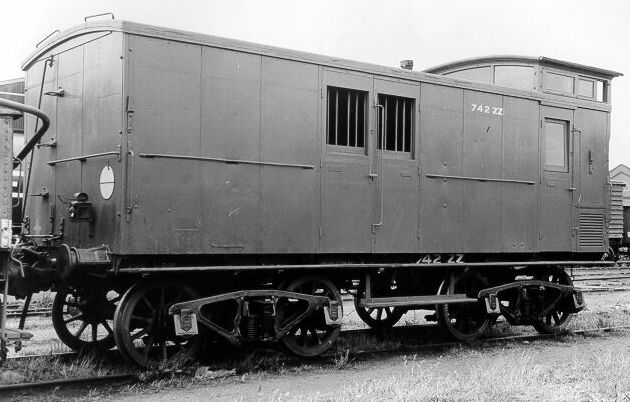

The removal of buffers from freight vehicles in the late 1950's had the effect of causing rough riding at the rear of trains.
When autocouplers were applied to new rolling stock or the conversions that progressed from 1928 to 1936, side buffers were retained. This was to allow coupling to stock fitted with screw couplings. The removal of the buffers allowed more slack between vehicles and placed all the the buffing force onto the coupler.
By 1957, the guards on the trains and unions were complaining about the hazard of slack action at the rear of the trains. Stories abounded of guards or travelling crews knocked to the floor.
In an effort to find a solution the railways converted a four wheel _Z__ van, number 742 to a bogie guards van. It featured cast bogies with outside "snubbers" ( spring dampers ). The van entered service as ZZ 742.
The van ran on experimental trains from December 1958. Departmental officers rode other trains as well to gauge the difference in riding qualities across different van types.
By mid 1959, ZZ 742 was in storage at Newport Workshops. By January 1960, the van had been converted back to a four wheeler and was fitted with a long shank coupler; the solution to the slack action problem.
The van re-entered service as _ZL_ 742, January 1960.
Fatal error: Uncaught Error: Call to undefined function mysql_connect() in /hermes/walnacweb05/walnacweb05ad/b2991/pow.pjv101/htdocs/cd/pages/code.php:9
Stack trace:
#0 /hermes/walnacweb05/walnacweb05ad/b2991/pow.pjv101/htdocs/cd/pages/c238m.htm(60): include()
#1 {main}
thrown in /hermes/walnacweb05/walnacweb05ad/b2991/pow.pjv101/htdocs/cd/pages/code.php on line 9